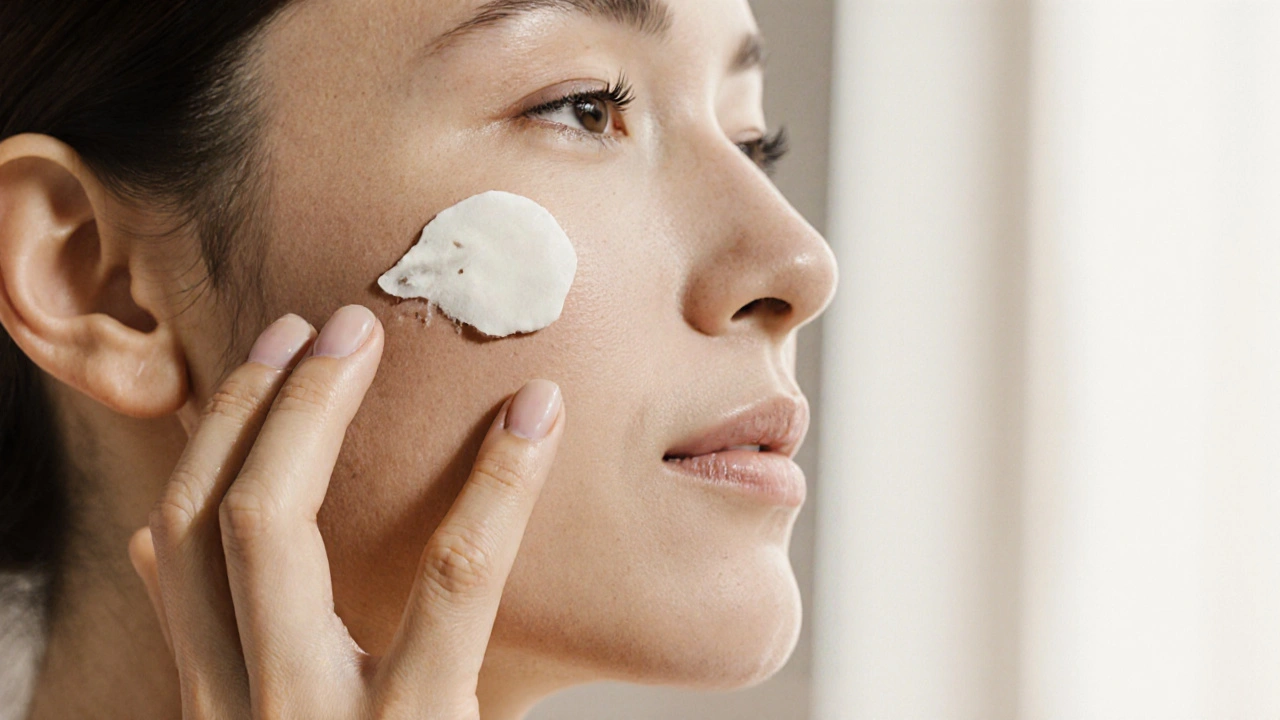When working with Hydroquinone Skin Lightening, a topical treatment that reduces dark spots by inhibiting melanin production. Also known as hydroquinone cream, it is a go‑to option for many seeking clearer skin. Some people first notice it while dealing with melasma, a hormone‑linked patchy darkening usually on the face or with hyperpigmentation, any excess melanin that shows up as age spots, post‑inflammatory marks, or sun‑damage. No matter the cause, the key to success is combining the active ingredient with a solid skincare routine, especially daily sunscreen, broad‑spectrum protection that blocks UVA/UVB rays and prevents new pigment from forming. This triple of hydroquinone, a clear treatment goal, and sun protection forms the backbone of most effective lightening plans.
Hydroquinone works by blocking the enzyme tyrosinase, which is needed for melanin synthesis. The result is less pigment forming over time, and existing spots gradually fade. Most dermatologists recommend a 2–4% concentration for over‑the‑counter use and a 4% prescription strength for tougher cases. It’s not a magic bullet; you still need patience—visible improvement usually shows after 4–8 weeks of consistent use. Many users pair hydroquinone with topical retinoids like tretinoin. Retinoids speed up skin turnover, helping the lightened cells rise to the surface faster. A classic “Kligman formula” mixes hydroquinone, tretinoin, and a mild steroid to reduce irritation while boosting results. If you’re wary of prescription blends, you can still see gains by alternating nights: hydroquinone one night, a gentle retinoid the next.
1. **Start Slow** – Apply a pea‑sized amount to the target area once daily. If irritation appears, cut back to every other day or switch to a lower concentration. 2. **Patch Test** – Dab a tiny spot on your forearm for 48 hours. Redness, itching, or burning means you should stop or choose a milder product. 3. **Layer Right** – After the hydroquinone dries, follow with a moisturizer that contains ceramides or hyaluronic acid. This keeps the barrier healthy and reduces dryness. 4. **Never Skip Sunscreen** – Even on cloudy days, at least SPF 30 broad‑spectrum is a must. Reapply every two hours if you’re outdoors. 5. **Watch the Clock** – Most experts advise a 12‑week max cycle before taking a month off. This “drug holiday” lowers the chance of ochronosis, a rare darkening that can happen with long‑term use.
Beyond the core routine, there are complementary strategies. Chemical peels containing glycolic or salicylic acid can lift dead skin cells, making hydroquinone work faster. Vitamin C serums add antioxidant protection and a mild brightening effect that pairs well with the darker‑spot focus of hydroquinone. For stubborn melasma, some clinicians add oral tranexamic acid or low‑dose hormonal therapy, but those are always prescription‑only and need medical supervision.
When you combine these tactics—hydroquinone’s melanin‑blocking power, retinoids’ turnover boost, and diligent sunscreen use—you create a synergistic system that tackles existing dark spots while protecting against new ones. That’s why the phrase “hydroquinone skin lightening requires consistent sunscreen” isn’t just a warning; it’s a proven principle backed by countless clinical studies. If you keep the routine steady, expect a noticeable fade of melasma patches and age spots within a couple of months, with continued brightening up to six months.
Ready to dive deeper? Below you’ll find a curated list of articles covering everything from dosing guides for hydroquinone to side‑effect management, alternative lightening agents, and real‑world user experiences. Whether you’re a beginner just curious about how the process works or a seasoned user looking for the next optimization tip, the posts ahead will give you practical, up‑to‑date information to help you decide the best path for your skin.

Compare Eukroma Cream's hydroquinone formula with safe, effective alternatives. Find the best brightening option for speed, safety, and budget.
READ